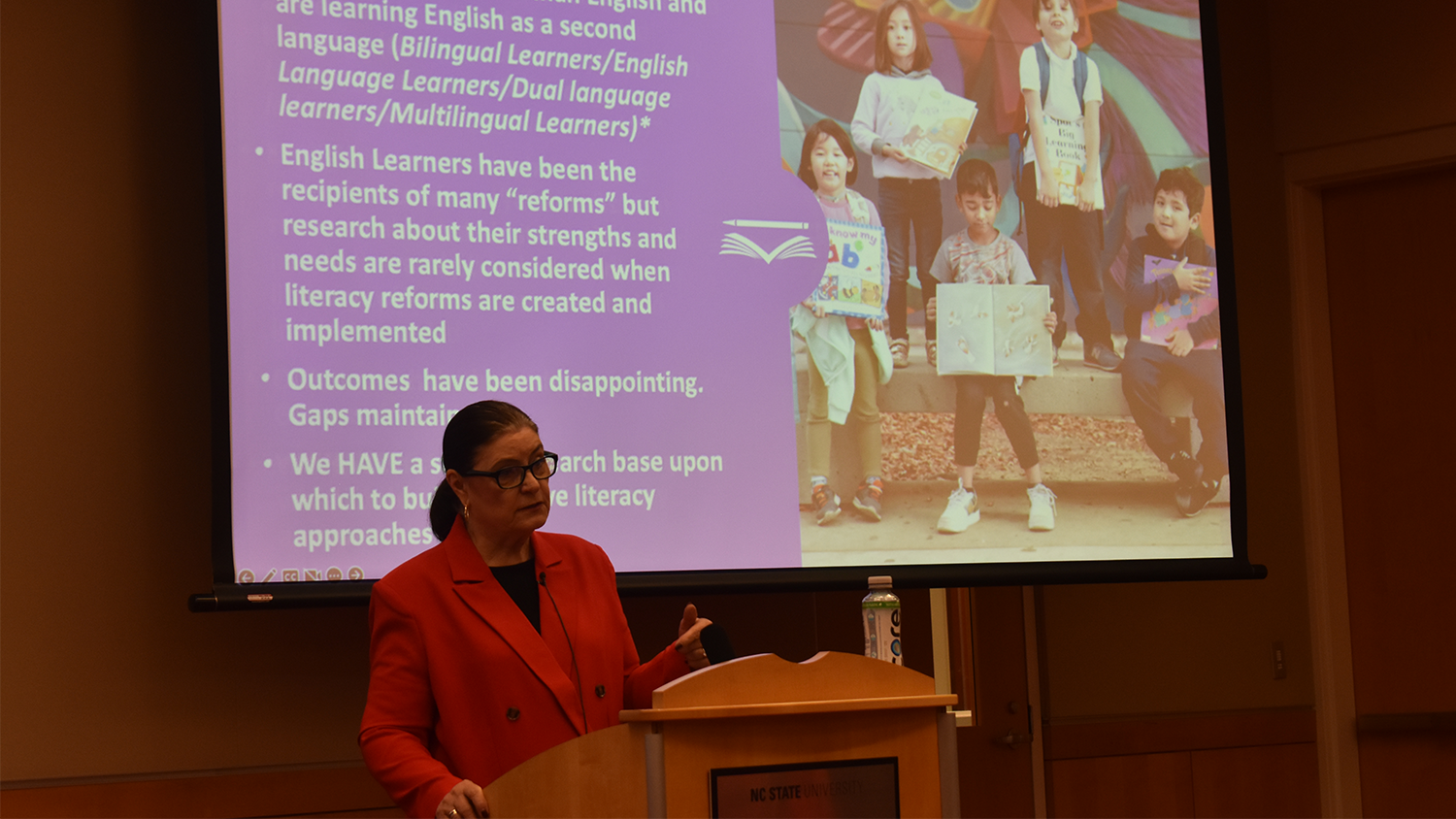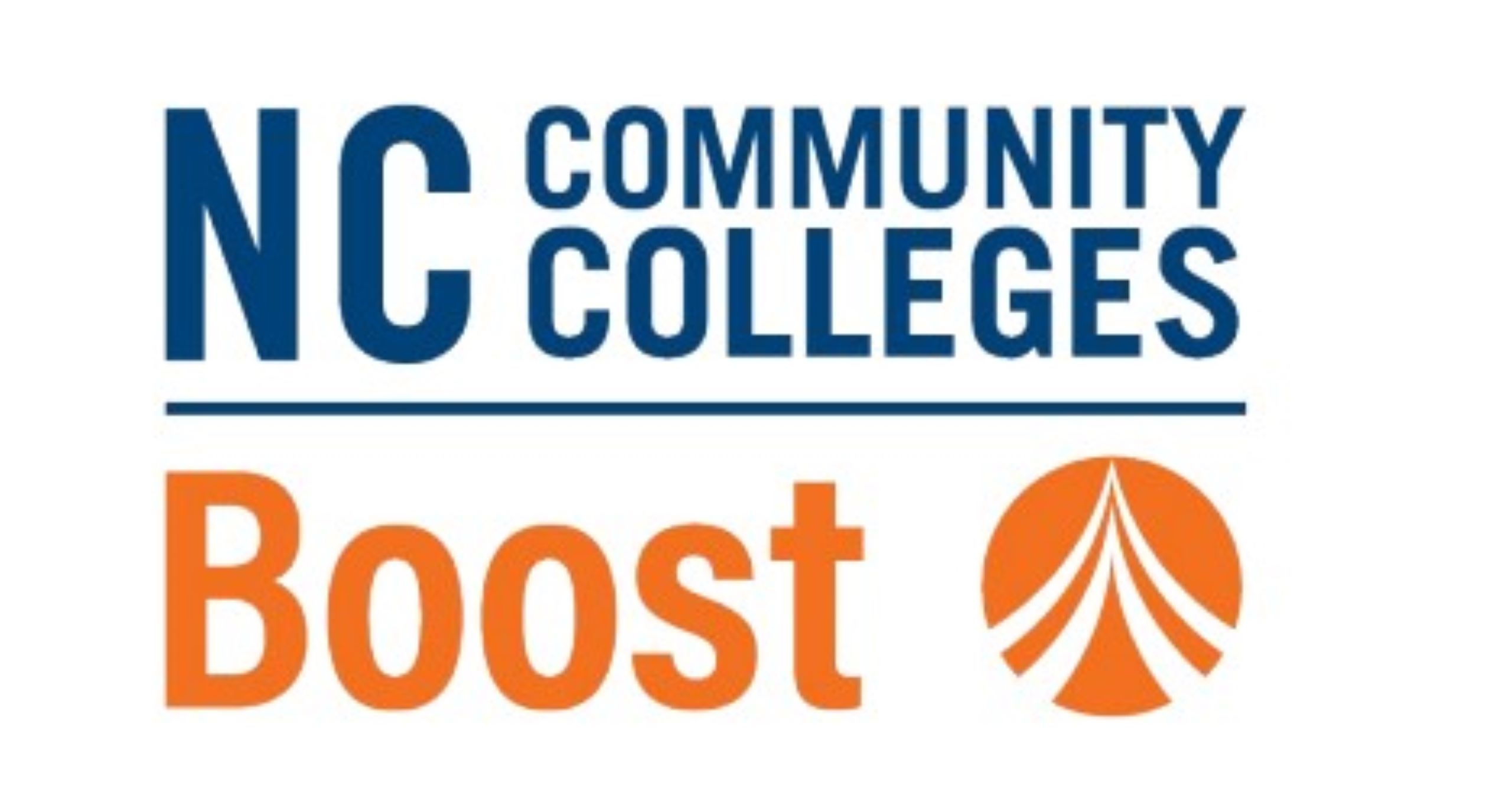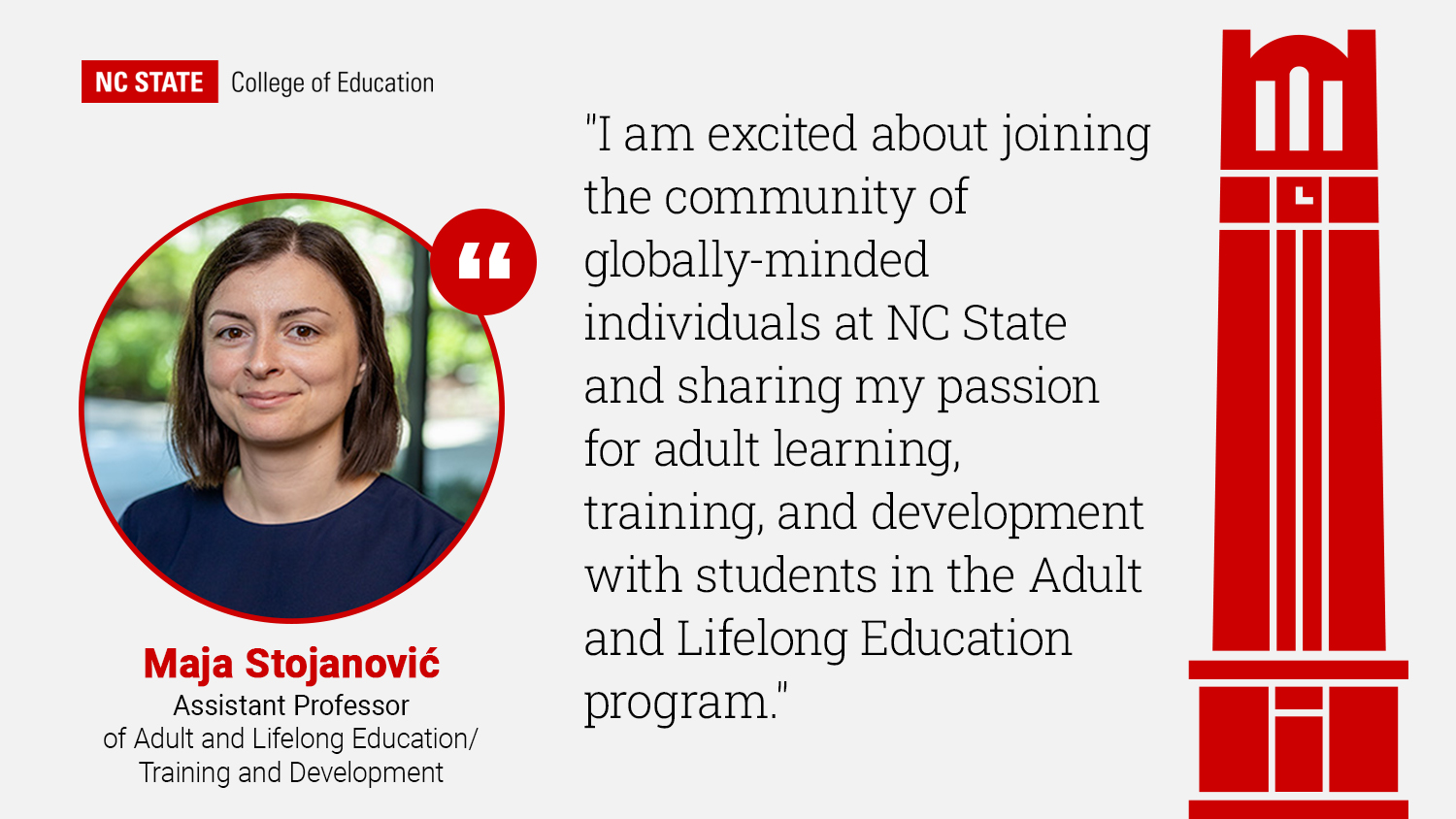‘When Two Languages Interact, You Create a Different Kind of Human Being:’ Kathy Escamilla Shares Advice for Teaching Literacy to Multilingual Learners During First Lecture of Linguistic Diversity Speaker Series

“When two languages interact, you create a different kind of human being.” This message was shared by Kathy Escamilla, professor emeritus at the University of Colorado, Boulder, during the first lecture as part of the Linguistic Diversity Speaker Series, organized by NC State College of Education Goodnight Distinguished Professor of Educational Equity Maria Coady.
Escamilla’s talk focused on the difference between monolingual and multilingual learners and the importance of serving the needs of bilingual students in meaningful ways.
“They’re informed by two different linguistic systems, and they bring them both. They don’t shut the Spanish door when they open the English door. It’s all there for them,” she said. “We have to consider their needs and the assets, not the deficits, that they’re bringing to school.”
Speaking to a room of primarily K-12 educators, many of whom worked in dual language classrooms, Escamilla shared the following advice for how best to draw on multilingual students’ skills to help them grow in their reading abilities.
Let students use their native language whenever possible
Translanguaging — switching between two languages when speaking — is often misinterpreted as a sign that a student has limited abilities in both languages, Escamilla said. However, it really means that they are using all of their linguistic resources to express themselves.
Unlike their monolingual peers, multilingual students often have two languages with two sets of words to choose from to describe objects and feelings and may choose to express themselves using the word that fits best, regardless of language.
“We want to strategically use both languages in service to instructional objectives. Don’t strictly separate the languages. Encourage parents to keep using the child’s first language because the more proficient in the first language, the better they are. Don’t censor a child’s first language; acknowledge their first language as part of their identity,” she said.
Use a holistic approach to show students how two languages connect
In her work, Escamilla has developed the Holistic Biliteracy Framework, in which all literacy lessons in Spanish and English are connected to one another without being redundant. For example, teachers can have students read the same book or poem in both English and Spanish to see how the ways of speaking and expressions differ between translations, and then do different activities related to the stories in both languages.
Educators can also connect two languages by creating complimentary literacy lessons related to the same topic. For example, when learning about the seasons, a dual language teacher could have students read a fictional story in Spanish and a nonfiction story in English.
“The important thing about this framework is connecting the two languages. It’s not just teaching Spanish and teaching English, it’s how we connect them for a trajectory toward biliteracy,” she said.
Don’t be afraid to use the language skills you know
Many adults, even those who speak Spanish, will often speak to multilingual children in English. Escamilla said that even if a person’s skills in Spanish, or whatever second language they may know, are not perfect, it’s valuable to speak to a student in their native language when possible.
“We’re afraid that if we don’t do it perfectly that we shouldn’t do it at all, and that’s not true. We’re never going to get out of our monolingual malaise unless we’re out there trying and making mistakes and using the language and learning,” Escamilla said.
- Categories:


